Our evaluations and opinions are not influenced by our advertising relationships, but we may earn a commission from our partners’ links. This content is created independently from TIME’s editorial staff. Learn more about it.
Student checking accounts are ideal for young adults to begin managing their money and finances. While many banks and credit unions offer student checking accounts, too often student checking accounts come with minimum balance requirements and fees that should have you looking elsewhere.
Here’s a look at the best student checking accounts available today, focusing on accounts with low fees and easy-to-use features to help you or your student confidently begin their financial journey.
Best student checking accounts compared
| Checking account | Best for | Minimum deposit for new accounts | Monthly fees | ATM network |
|---|---|---|---|---|
Banking in person | $0 | $0 while in school up to the graduation date provided at account opening (five years maximum) for students 17 to 24 years old | 15,000+ Chase ATMs | |
Free ATMs nationwide | $0 | $0 | No ATM fees and unlimited reimbursements when using other ATMs in the U.S. | |
Low fees | $0 | $0 | 60,000+ (MoneyPass, Allpoint, or Visa Plus Alliance)1 | |
No minimum account balance | $0 | $0 | 60,000+ no-fee ATMs | |
Schwab Bank Checking | Study abroad | $0 | $0 | Unlimited ATM fee reimbursements worldwide |
Capital One MONEY Checking Account | Joint account with a parent | $0 | $0 | 70,000+ (Capital One, MoneyPass, or Allpoint) |
USAA Youth Spending Account | Military families | $25 | $0 | 100,000+ USAA and preferred partner ATMs |
Our recommendations for the best student checking accounts
Best for banking in person: Chase College CheckingSM
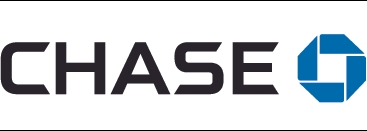
Chase College Checking
Chase College Checking
Details
- Enjoy $100 as a new Chase checking customer when you open a Chase College CheckingSM account and complete 10 qualifying transactions within 60 days of coupon enrollment.
- No Monthly Service Fee while in while in school up to the graduation date provided at account opening (five years maximum) for students 17-24 years old.
- Students ages 18-24 with a Social Security Number can open an account online or at a Chase branch. Students with no Social Security number or who are 17-year-olds can only open an account at a branch.
- Keep track of your money in the Chase Mobile® app. The app helps you manage your money.
- Zelle® is available in more than 1,000 banking apps in the U.S. So you can send and receive money from almost anyone you know and trust who has a bank account in the U.S.
- Access to more than 15,000 Chase ATMs and more than 4,700 branches.
- JPMorgan Chase Bank, N.A. Member FDIC
- Chase Overdraft AssistSM – no overdraft fee if you’re overdrawn by $50 or less at the end of the business day or if you’re overdrawn by more than $50 and bring your account balance to overdrawn by $50 or less at the end of the next business day*
Disclosure
With Chase Overdraft AssistSM, we won’t charge an Overdraft Fee if you’re overdrawn by $50 or less at the end of the business day OR** if you’re overdrawn by more than $50 and you bring your account balance to overdrawn by $50 or less at the end of the next business day (you have until 11 PM ET (8 PM PT) to make a deposit or transfer). Chase Overdraft Assist does not require enrollment and comes with eligible Chase checking accounts.
If you want to visit a bank branch, Chase College CheckingSM is a top choice for students. The account has no monthly fees for up to five years while you’re enrolled in college. Chase is the biggest bank in the United States, with a presence in all 48 contiguous states and more than 15,000 ATMs. New users can earn a $100 bonus after completing 10 qualifying transactions.
Chase generally has good customer service and quality online and mobile banking. As a member of the Zelle network, users can send or receive funds with near-instant transactions to or from other accounts participating in Zelle. The account does incur fees for some less-frequent activities, such as using out-of-network ATMs and overdrafts. After five years, a $6 monthly fee applies unless you maintain a $5,000 ending daily balance or meet other activity requirements.
Younger students should consider the Chase High School Checking account as an alternative.
Best for free ATMs nationwide: Axos Rewards Checking
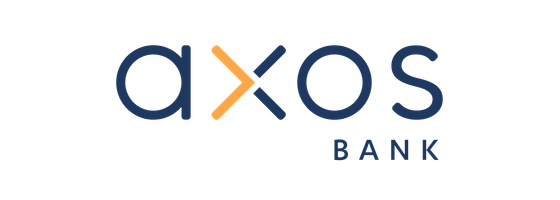
Axos Rewards Checking
Axos Rewards Checking
Axos Rewards Checking is an online account that makes using any ATM in the United States easy. Not only can you use any ATM, but Axos will also reimburse you for fees charged by other ATMs nationwide with no limits. That’s one of the best deals for free ATMs you’ll find anywhere.
Additionally, the bank charges no overdraft fees, has no monthly minimum balance requirement, and you can open a new account with a minimum $0 deposit. If you meet a combination of various activity requirements, you can also earn interest. This account could work well whether going to school near home or out of state. As a bonus, new users can qualify a bonus up to $300 with promo code AXOS300 if they meet minimum direct deposit requirements, effective until June 30th, inclusively.
Best for low fees: Chime® Checking
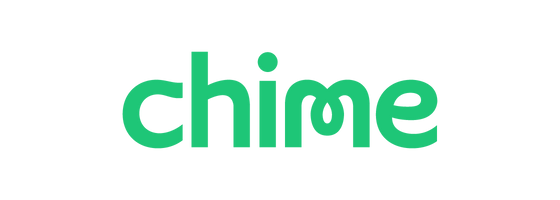
Chime® Banking App
Chime® Banking App
Chime® Checking is a top pick thanks to a combination of low fees and easy-to-use features. The account has virtually no fees. That includes no monthly service fees, minimum balance requirements, or overdraft fees. Chime® Checking doesn’t charge any ATM fees and has more than 60,000 of them. The only fee you’ll likely pay is when using an out-of-network ATM.
Opening an account is quick and simple. Accounts are primarily managed through the Chime® Checking app on iOS or Android. If the account is overdrawn with a debit card purchase, Chime® Checking will cover up to $200 in overdrafts for qualified users with no added fees. You can deposit cash at any Walgreens, and free withdrawals are available from ATMs at Walgreens, 7-Eleven, CVS, and Circle K locations. The package of features from this FDIC-insured account is so good that many parents may want to sign up, too.
Best for no minimum account balance: Discover® Cash Back Debit Account
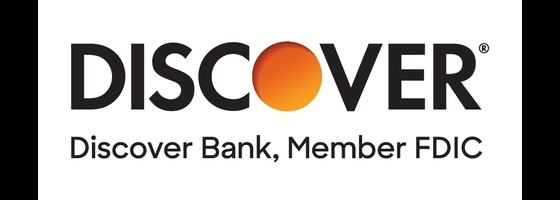
Discover® Cashback Debit Account
Discover® Cashback Debit Account
Discover® Cash Back Debit Account is a checking account with almost no fees. The only charge is for sending external wire transfers. Users can earn 1% back on up to $3,000 in monthly purchases using the account’s debit card. The online account is easy to use and includes an optional overdraft protection feature.
The only downside is that Discover cards are not as widely accepted as Visa or Mastercard debit cards, but they work most places you’ll go in the United States. For college students, the ability to earn cash back from regular purchases they would make anyway, such as groceries or textbooks, is a nice feature you won’t find with most modern checking accounts.
Best for study abroad: Charles Schwab Bank Investor Checking
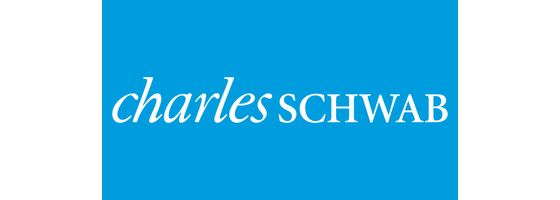
Charles Schwab Bank Investor Checking
Charles Schwab Bank Investor Checking
Charles Schwab Bank features a checking account with no recurring fees or minimum balance requirements. When studying abroad, the account’s standout features include no foreign transaction fees when using the account’s debit card and unlimited ATM fee reimbursements worldwide.
By opening a Schwab Bank checking account, you’ll also get a Schwab One brokerage account. Even if you’re not investing while in school, it’s a good option for investing when you graduate and want to start building your wealth for the future. The account also pays interest on deposited balances. It’s not the best interest rate, but it’s good compared to the average checking account, many of which pay no interest to account holders.
Best for joint account with a parent: Capital One MONEY

Capital One MONEY Checking Account
Capital One MONEY Checking Account
Marketed as a teen checking account, Capital One MONEY is a good option for students ages eight to 17. MONEY checking accounts are joint accounts with a young person and a parent or legal guardian. The account has no recurring monthly fees or minimum balance requirements. It offers parental controls, so the adult maintains a level of oversight. At age 18, the teen can convert to a Capital One 360 Checking account.
With more than 70,000 fee-free ATMs and no fees for typical banking activities, it’s a great option for learning about banking without risking high, unexpected costs. The account pays a modest interest rate on balances. The account is primarily online and can be used without visiting a branch, but if you live near Capital One locations, you can bank in person too.
Best for military families: USAA Youth Spending Account

USAA Youth Spending Account
USAA Youth Spending Account
USAA is a unique financial institution that only works with military members, veterans, and their families. It’s known for offering great customer service and highly competitive rates and fees. The USAA Youth Spending Account comes with no monthly or overdraft fees. A parent or guardian acts as a joint account holder and can set account alerts and other parental controls.
USAA Youth Spending Accounts are only for kids through age 17. When 18 or older, USAA Classic Checking is also an excellent choice. Both of these accounts pay a minuscule 0.01% APY interest rate, however, so you’ll likely want to use a separate savings account to earn on larger balances.
Our methodology
To pick the best student checking accounts, our team reviewed dozens of checking accounts, focusing on fees, online banking features, no-fee ATM access, interest rates, and other banking options. The best overall accounts on our list feature low fees or no fees for typical banking use and make it easy for students to manage their money online or using the banks’ mobile apps.
How to pick the right student checking account for you
To pick the best student checking account for your unique needs, consider how you plan to use the account. While some people prefer visiting a bank branch, for example, most accounts can be used online only. These are the top criteria most students and their families should review when picking a checking account.
- Monthly fees and minimum balance requirements: One of the most important checking account features to pay attention to is fees. Recurring fees or fees for activities you’ll perform frequently can easily add up. Avoiding fees can help you keep as much as possible of your hard-earned money. Fees can be even more impactful to a student living on a tight budget.
- Fee-free ATMs: Paying $2, $5, or more every time you need cash can be a significant cost. Most banks offer a network of ATMs without surcharges. Some even reimburse fees imposed by out-of-network ATMs.
- Online banking features: Online transfers, bill payments, and mobile check deposits are commonly used features. Consider what you need from an account and ensure those needs are met.
Requirements to open a student checking account
Most student checking accounts require a joint account holder for minors under age 18. For legal adults 18 or older, a joint account isn’t necessary. Depending on the bank and account you choose, a minimum deposit may be required to open a new account. Some accounts are only available to residents of specific states or locations. A subset of accounts may require military affiliation or other affiliations to join or sign up as a new member.
Frequently asked questions (FAQs)
Looking for the best student checking account? Here are some of the most commonly asked questions about student checking accounts.
How many student checking accounts are you allowed?
Some banks limit the number of accounts you’re allowed to have with that specific institution. No rule says you can’t have multiple accounts at multiple banks. However, with more accounts, managing and keeping track of your finances can be harder.
What happens to the student checking account once you graduate?
Depending on the bank, accounts typically convert to a standard adult checking account offering. When switching to a different checking account, the fees and minimum balance requirements may change.
What are the benefits of a student checking account?
Student checking accounts offer several advantages. Many come with no fees or lower fees than traditional checking accounts. They may also offer features for parents to co-manage the account to help students learn how to manage their bank accounts for future financial success.
Should you open a student checking account?
For most students, it’s up to you and your family to decide if a student checking account makes sense. Most students living away from home would benefit from their own checking accounts. Even while living with family, student checking accounts offer helpful features and benefits that make them a desirable choice to help young people get started with managing their finances.
Chime is a financial technology company, not a bank. Bankingservices and debit card provided by The Bancorp Bank N.A. or StrideBank, N.A.; Members FDIC. The secured Credit Builder card issuedby Stride Bank, N.A.
1 Out-of-network ATM withdrawal fees may apply except at MoneyPass ATMs in a 7-Eleven, orany Allpoint or Visa Plus Alliance ATM.
*Rates are subject to change. APY are updated to Mar. 1, 2024.
The information presented here is created independently from the TIME editorial staff. To learn more, see our About page.

